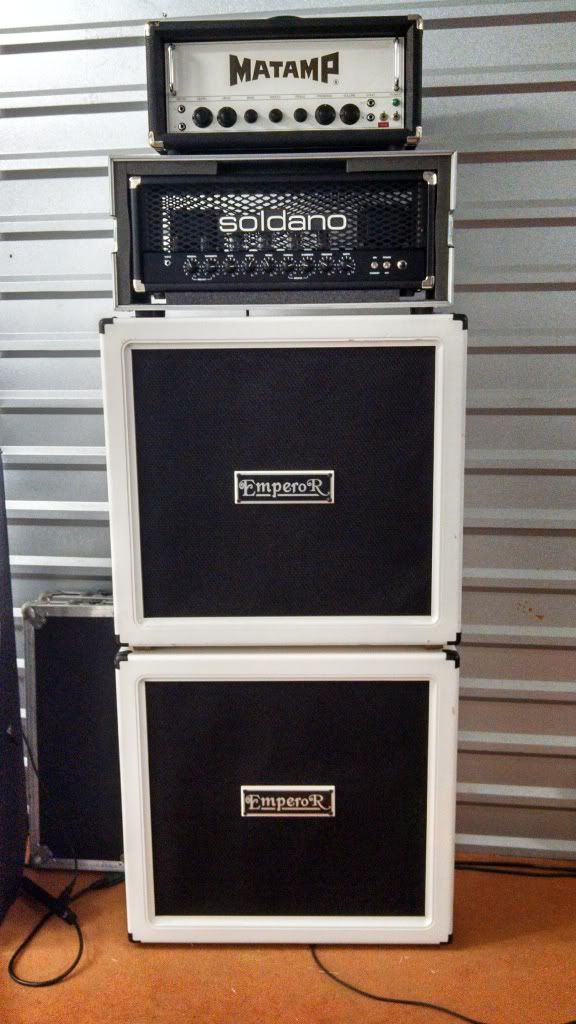Also:
What kind of gear do you use?
Kelly: I play a ’93 Gibson Les Paul Studio with a Duncan Distortion pickup being the only mod. My amp is a Marshall JCM 800, and I use these unbelievably powerful, handmade custom cabs from EarCandy in Indiana. The frequency range is stunning. Every note is totally articulated. There’s bottom-of-the-barrel growl, but throw in a high note, and it’s super clear. Typically, I play straight with a touch of delay, but I sometimes use an MXR Flanger, Blue Box, or EVH Phaser. Both Steve and I use Dunlop Ultex .60mm and green Tortex .88mm picks.
Steve, your rig is a little more complex.
Von Till: I call it the “chain of death!” My main guitars are no-nonsense, Strat-style guitars built from Warmoth parts. I wanted something that would be warm with a lot of sustain, so the necks are fat, the frets are huge, and there’s no wood cut away for pickguards or tremolo units. I installed a Seymour Duncan Distortion pickup in the bridge position, and a Bartolini in the neck—both wired with TRS outputs so the signals can be routed to my custom switcher. On Rising, I used my new custom Tele-style made from Warmoth parts, and further customized by Keith Holland in Los Gatos, California. There’s no finish or pickguard—just an oil rub—so there’s nothing to suck the tone out. It also has a baseball bat for a neck, really big frets, and, along with the traditional Tele-style bridge and neck pickups, a Gibson P-90 in the middle position.
My custom switcher—which was originally built with old Rockman MIDI Octopus units, and later modified by John Joseph of Dredge Tone—allows me to select which pickup signal is active, turn the true-bypass effects loop for my floor pedals on and off, switch amp channels, and select from a series of rack-mounted distortion pedals for each of my two amplifiers. Everything is managed with a custom MIDI foot controller. Some of the pedals I use are the MXR Phase 90 and Blue Box, a MoogerFooger MF-101 Lowpass Filter and MF-102 Ring Modulator, a Dunlop Uni-Vibe, and an Electro-Harmonix Bass Micro Synthesizer. The signal is routed to my two amps—a Mesa/Boogie Mark IV with an old-style Mesa cab and a Fender ’65 Twin Reverb Reissue combo—which I run simultaneously. I use all three channels on the Boogie independently: the Lead channel with a vintage Pro Co Rat for full gain, the Rhythm II channel without the Rat for “half” distortion, and the Rhythm I channel for clean, pretty stuff.
The Boogie has a lot of character, and the lead tone is like Skynyrd on low-end steroids. It has all this resonance, and the distortion kind of reaches back before it brings the hammer down. It’s not a delay, but it almost feels like the speakers have to take a breath before that exhale. I owe that to the old Boogie 4x12 cabinet, which is deeper and shorter than their new cabs, as well as having the bottom speakers in a sealed enclosure, and the top pair set in an open-back configuration. The Fender is pretty clear, so I run it with another Rat for full-bore gain, and an MXR Distortion Plus for “half gain.”
Pretty soon, I’ll be switching to a Bob Bradshaw system to control everything. I have been totally hooked on the tonal options two amps offer for almost 20 years. I don’t think I’ll ever go back to a single amp.













